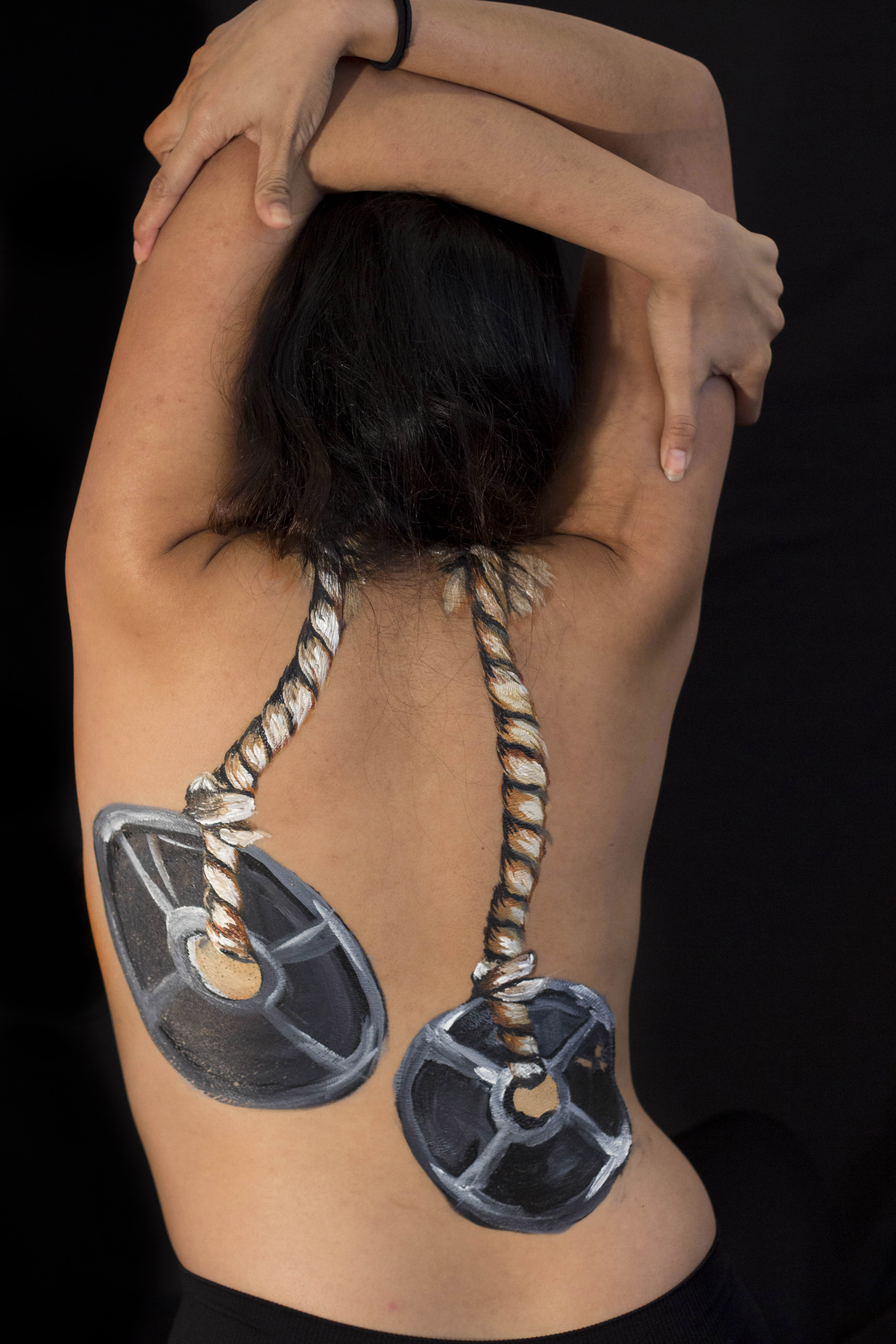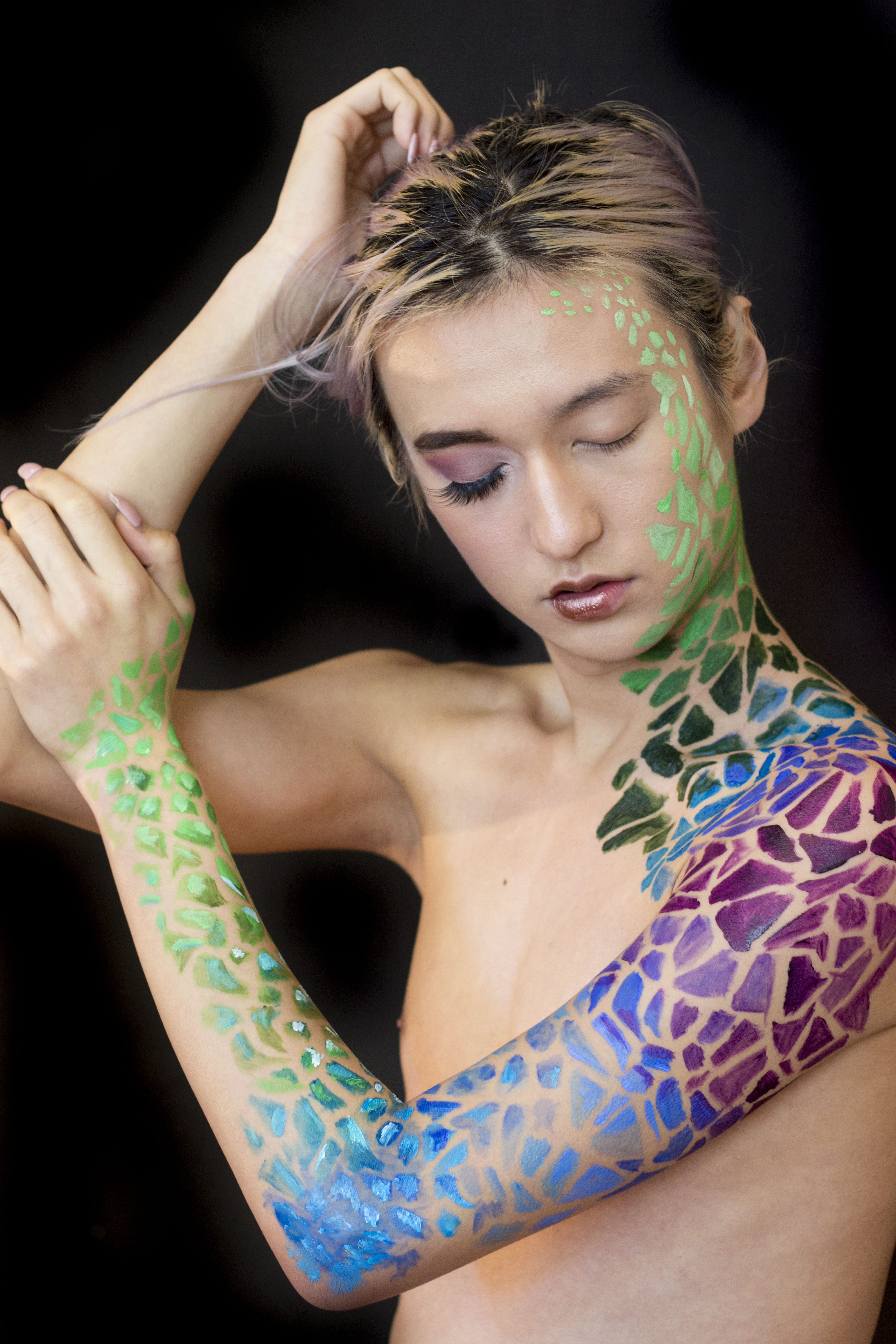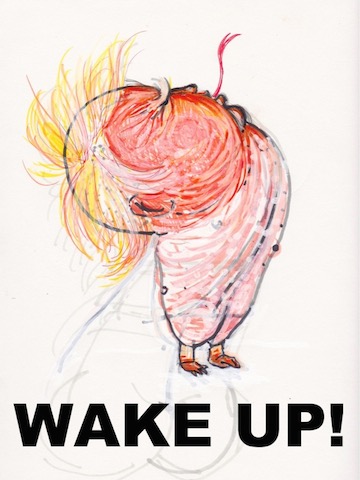Illustration featured in “React: An Artistic Platform for Political Expression”
React: An Artistic Platform for Political Expression, an art exhibit curated by Alyssa Dorn, Doreen Etaat, and Louie Greenwald, stood on display in the Powell Rotunda from March 6th to March 11th. The trio formed the exhibit for Honors Collegium 179M: History of Art as Social and Political Commentary, providing community members and students with a platform to express the unease centered around recent political change. We asked Alyssa Dorn a few questions about the exhibit.
Q: How did you collect the art pieces?
Alyssa Dorn: We each went out and figured out which of our friends or community members we could reach out to to ask for art, and whenever we got a new piece we shared it with each other through Google Drive so we all knew what was happening. I know that Doreen got the large paintings, a tank top, the “big man” series, and some posters that were used in protests. Louie found Tom Miller’s work. I brought in the “Nasty Woman” t-shirt, a couple of protest posters, and a photo series in which I was the photographer. I worked with the student artist Ofri Shmul to do body painting, which I then photographed.
Q: What made you decide to create the art exhibit in this way?
AD: For [the body painting] series, I wanted to use what I know – photography – to create artwork that increases public awareness and understanding and could help negotiate fears of the “other” by starting a real dialogue among students and community members. I started with the idea for one body painting– a painting of a womb on a woman’s stomach with a male hand over it, claiming possession, entitled “politician’s choice.” Then, after finding models among my friends and spending way too much on paint, I expanded my ideas, adding paintings on depression, anxiety, and LGBTQ issues by talking with people I know about how they feel and using the body paint to visualize the internal externally. I feel like that’s especially important with issues like depression and anxiety, where people might not realize that your fears or your panic attacks or constantly feeling weighed down are real or justified, just because they can’t see it. But it’s still important with LGBTQ rights too, to show someone painting herself – not letting others label her – and try to open up conversations that way. So I hope that the painting/photography series shows a variety of perspectives to reveal the unease people feel about how people see them, treat them, and how they are represented or misrepresented both personally and generally, and that it allows for increased understanding and opens a dialogue that can lead to that understanding.



Q: What effect does art like this have on the individual? On the political climate?
AD: I think more than anything it gives students and community members a place to show their art and express themselves in a safe space created not to antagonize anyone, but to open up conversations. It gets people thinking about ideas and beliefs other than their own and hopefully, by connecting those beliefs to artwork that anyone can enjoy, gets them to consider others’ positions in more than a superficial way.
In times of unrest, art becomes both an outlet and a statement for the disillusioned. Exhibits like these ensure that their voices remain heard.

